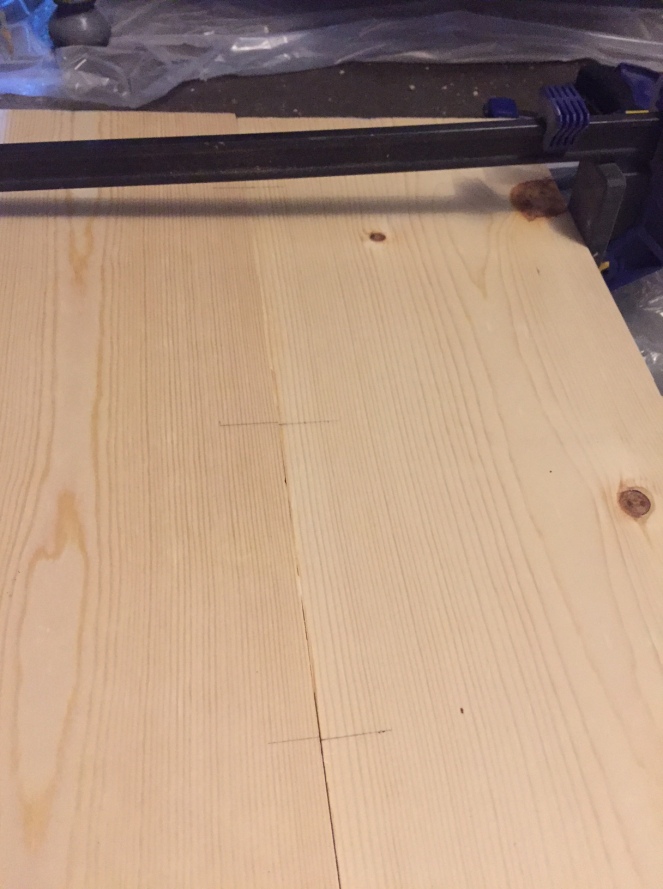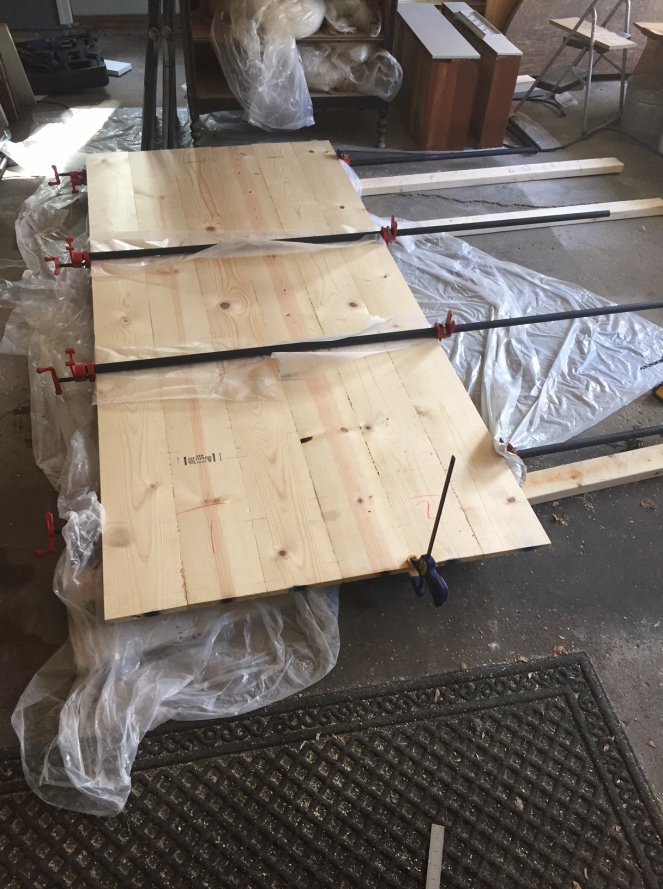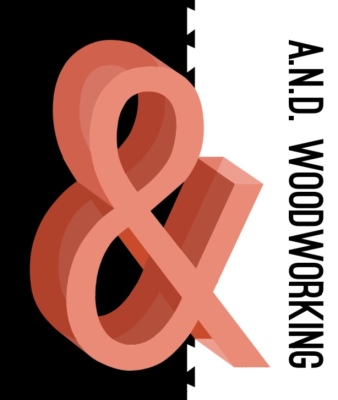I have a very large panel to construct for a tabletop, essentially 65″ wide, so I am using 9-1x8x8’s. I’ve mentioned several times that I do not have a planar or jointer. Jointer would be awesome, but I usually just spend an extra half-hour picking straight boards at the lumber yard and you can do pretty well. But when butting the edge of boards together, a planar is kind of necessary…UNLESS you have a way to align the top face of the boards!
I’ve read a lot about joinery over the past few years and I have come across many articles that say dowels and biscuits do not provide any additional strength and are only valuable as a means to help align boards on glue-up (although I bet the Festool Domino would have something to say about that…btw, if someone wants to give me one, I will do a lengthy review for all of my 10 followers!). I’ve also come across a bunch of Pins where people just used pocket screws to join boards since you can’t see them on the underside of a tabletop. These people were amateurs like myself with no planar. So I wanted to figure out why I would use a dowel instead of pocket screws as it seems to do the same thing, but is more discrete (and definitely more work). I found an experiment someone did with dowels, pocket screws and mortise/tenons to join the end of one board to the edge of another board. Well of course mortise/tenons were the best. But I am joining the edges of boards, not the end, so I will just discuss the dowels and pockets.
I was surprised at how much better dowels/glue did over the pocket screws. One big difference is that the boards that used pocket screws started pulling apart way before the breaking point. Whereas the boards that were doweled stayed tight up until the dowel snapped, which was still at a higher weight than the pockets. This was very interesting and I bet has something to do with the lack of glue in the pocket holes.
I should mention I found a doweling jig in my garage in July that my husband apparently bought back in 2009 when we made some curtain rods…I had no idea we had this tool! So knowing that I have a doweling jig, knowing that I don’t have a planar and knowing that dowels help keep boards vertically aligned when being joined, I really wanted to try it. I know I will still use pocket holes as I think they provide an efficient means to make joints that don’t need to have the integrity of a mortise/tenon! But for this project, I decided that dowels would be the way to go for this large panel. Not to mention that dowels are so much cheaper than pocket screws!!!
I also needed clamps capable of clamping 9 boards together!! I bought 4 Bessey 3/4″ pipe clamps. I’ve wanted some pipe clamps for a while, but they were necessary for this glue-up. I bought some black steel pipe from the Home Depot (a.k.a. The Orange Wood store by my children) and had them cut the 10′ pipe into a 7′ and 3′ section (woohoo, two clamp sizes for the price of one!) The pipe only needs to be threaded on 1 side for these pipe clamps so they actually didn’t need to thread the pieces for me!
With my clamps, glue, dowels, and jig I started the process, making sure to alternate “cupped-ness”. All boards cup either up or down so most people agree to alternate on a glue-up so the whole panel doesn’t want to cup in one direction. Then I lightly clamp the boards together and draw a line where the dowel will be located making sure the line is perpendicular to the edge of the board (using a square).

I only worked on 2 boards at a time…I KNOW! Crazy right?!? Well it is less stress and I only have like an hour during my daughter’s nap to work so it actually works out pretty well. After I drilled the dowel holes, dry-fit the dowels and glued up the first 2 boards, I still noticed a small amount of vertical misalignment between the dowels. So for the rest of the boards, I used like 13 dowels for each board…yes that means if you count it up, I drilled like 208 holes! My 4 year-old son helped drill a handful with the Task Doweling Jig, it is that easy/precise. In fact, every…hole…was…AWESOME! It self-centers the dowel hole making the boards always in alignment on the top face. It does have a board width limitation of like 2 ¼” but for edge joining, that limitation should never get in your way.
I think I want one more clamp, but otherwise, the Bessey ¾” pipe clamps were great too! Very happy with my purchase! Now I want to glue-up everything! I think a farmhouse table is on the horizon!


why not use a block plane or another type of hand plane? they’re under $50.
LikeLike
Fair point, that would just be a lot of hand planing for this large of a panel. I also worry about uneven planing since I haven’t really used one before. I have a cheap one but I think there is an art to it that I haven’t mastered yet. Or maybe too cheap and I need a better one?!?
LikeLike